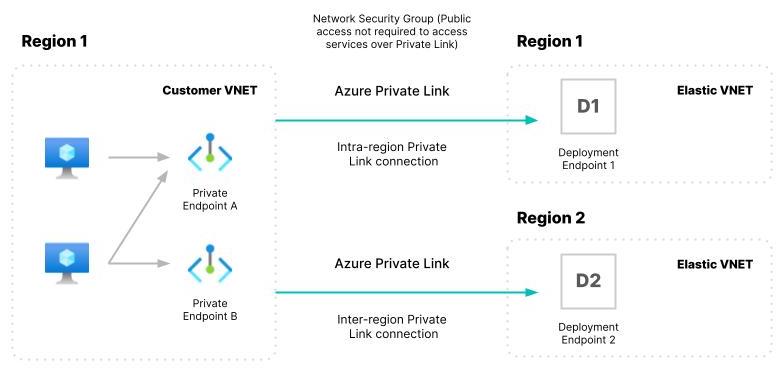All Categories
Featured
Table of Contents
- – What Are The Leading Semantic Seo Strategies B...
- – What Is The Most Reliable What Is Semantic Seo...
- – How To Choose The Top Semantic Seo Tutorials
- – Who Has The Most Recommended Optimizing For S...
- – What Is The Most Suitable Semantic Seo Audit...
- – What Is The Most Suitable Structured Data Fo...
- – What Is The Ideal Semantic Seo Tools Service...
The internet is altering, ending up being increasingly more semantic. Search engine optimization is also transforming and coming to be a lot more semantic. This is because online search engine have actually developed and are relocating an increasing number of in the direction of reading material on the internet. Certainly, that has actually likewise transformed the means we develop web content, particularly if we desire to rate much better in the online search engine.
Intertwingularity is not generally acknowledged, individuals keep pretending they can make things deeply ordered, categorizable and consecutive when they can't. Based on the relationships between search intents, the search engine likes a content in positioning by computing the distance between the vectors of significance.
It allows you to see, beginning with a subject, all the entities that are associated to that subject. By doing this you can plainly see which entities/concepts/ideas have already been covered on your site, and you can uncover brand-new chances by understanding what material you can add and just how to develop it.
What Are The Leading Semantic Seo Strategies Brands To Buy
It has the ability to make your content reasonable for internet search engine on the one hand and for your audience on the other. Structuring your content version highlights your material and its underlying partnerships to make sure that search engines can acknowledge you among hundreds of items of info, making you extra visible to individuals that fulfill the search intent related to your business.
In semantic SEO copywriting, an editor begins with a more comprehensive variety of subjects and customizes the content to include semantically appropriate terms and phrases that aid viewers recognize a topic, similar to reviewing content in a wiki. From a material composing point of view, one useful means to do this is to develop a vocabulary of terms and concerns surrounding your target subject.
What Is The Most Reliable What Is Semantic Seo To Get
Discover more concerning by watching the by!.

Semantic search refers to the procedure of just how internet search engine comprehend and match key phrases to a searcher's intent in organic search engine result. Before semantic search, search engines like Google operated like matchmakersaligning certain words in your query with those exact words on websites. The outcomes were straightforward but frequently lacked deepness.
How To Choose The Top Semantic Seo Tutorials
It enables Google to supply quick, accurate response to search queries about real-world subjects. When you type a query word into Google, you're not just getting in a series of words. You use a complex web of meanings and connections. Google's Expertise Chart sees these words as entities with context and relationships.
When you browse for "Apple," Google doesn't just see a word that defines a fruit. It identifies Apple as a company and can supply relevant information. It was Google's solution to the increase of voice searches, where inquiries became more conversational and nuanced.
Who Has The Most Recommended Optimizing For Semantic Search Service?
By integrating NLP, Hummingbird permitted Google to move beyond plain keyword matching. It aided the search engine comprehend search intent, increasing the probabilities that results would accurately match the reason behind a customer's search. As the third most vital ranking variable after web content and links, RankBrain has actually improved Google's semantic search abilities to recognize the significance of search inquiries.
Making it much more effective at dealing with never-before-seen search queries. RankBrain considers even more than simply search phrases when examining a search inquiry.
It fetches outcomes that match the key phrases and line up with the overall intent of supplying puppy training advice. And if the customer frequently looks for dog-related web content, Google might prioritize extra detailed training guidesrecognizing the customer's recurring passion in the subject. Integrating technologies like the Expertise Graph, Hummingbird, and RankBrain, semantic search assists the Google algorithm analyze and link data throughout a vast web of info.
What Is The Most Suitable Semantic Seo Audits To Get Right Now
The emphasis changes from keyword option to a holistic method incorporating individual intent, topical significance, and total user experience. Producing content that deals with the searcher's needs with comprehensive details can enhance your SERP rankings.
A wider approach to content aligns better with semantic search's change away from exact key phrase matching and towards individual intent. Material that covers search queries more extensively not only pleases users.
And five times more than websites that take 10 seconds to load. While technical SEO guarantees optimal internet site performance and availability, focusing on customer experience (UX) takes it a step even more. UX intends to create an aesthetically attractive, straightforward interface with appealing, high quality content that motivates site visitors to stay. Semantic search modern technology makes it possible for online search engine to intend for outcomes that provide the very best feasible UX.
What Is The Most Suitable Structured Data For Semantic Seo Plan?

All display Google's ability to attend to a topic question comprehensively. By comprehending the context and intent behind customer inquiries, online search engine can deliver extra appropriate details and possibly increase user interaction. Customization in search results page produces better UX.Based on your previous search history and preferences as a user, semantic search helps internet search engine customize the results to fit your distinct needs and passions.
So it brings results that match the keywords and line up with the general intent of giving pup training suggestions. And if the user often browses for dog-related content, Google could prioritize a lot more detailed training guidesrecognizing the individual's recurring rate of interest in the topic. Incorporating modern technologies like the Understanding Graph, Hummingbird, and RankBrain, semantic search aids the Google algorithm analyze and link information throughout a huge web of details.
What Is The Ideal Semantic Seo Tools Service To Use
The focus changes from keyword selection to a holistic technique encompassing customer intent, topical significance, and general customer experience. Producing web content that attends to the searcher's needs with comprehensive details can enhance your SERP positions. Below, we describe the patterns and methods that combine the requirement for semantically informed content. Later on, we supply actionable pointers to turn these understandings right into best techniques.

A broader technique to content aligns better with semantic search's change away from specific search phrase matching and towards individual intent. Content that covers search inquiries much more completely not just pleases users.
UX aims to develop a visually enticing, user-friendly interface with appealing, top quality web content that urges visitors to remain. Semantic search technology allows search engines to intend for outcomes that give the ideal possible UX.
All display Google's ability to attend to a subject question thoroughly. By recognizing the context and intent behind customer inquiries, search engines can deliver much more relevant details and possibly boost customer involvement. Customization in search results page makes for much better UX.Based on your past search history and preferences as a customer, semantic search helps internet search engine customize the outcomes to fit your special needs and passions.
Table of Contents
- – What Are The Leading Semantic Seo Strategies B...
- – What Is The Most Reliable What Is Semantic Seo...
- – How To Choose The Top Semantic Seo Tutorials
- – Who Has The Most Recommended Optimizing For S...
- – What Is The Most Suitable Semantic Seo Audit...
- – What Is The Most Suitable Structured Data Fo...
- – What Is The Ideal Semantic Seo Tools Service...
Latest Posts
Top Seo With Semantic Search Sales Near Me
A Top Improving Rankings With Semantic Seo
How Do I Find A Semantic Seo Analysis Service?
More
Latest Posts
Top Seo With Semantic Search Sales Near Me
A Top Improving Rankings With Semantic Seo
How Do I Find A Semantic Seo Analysis Service?